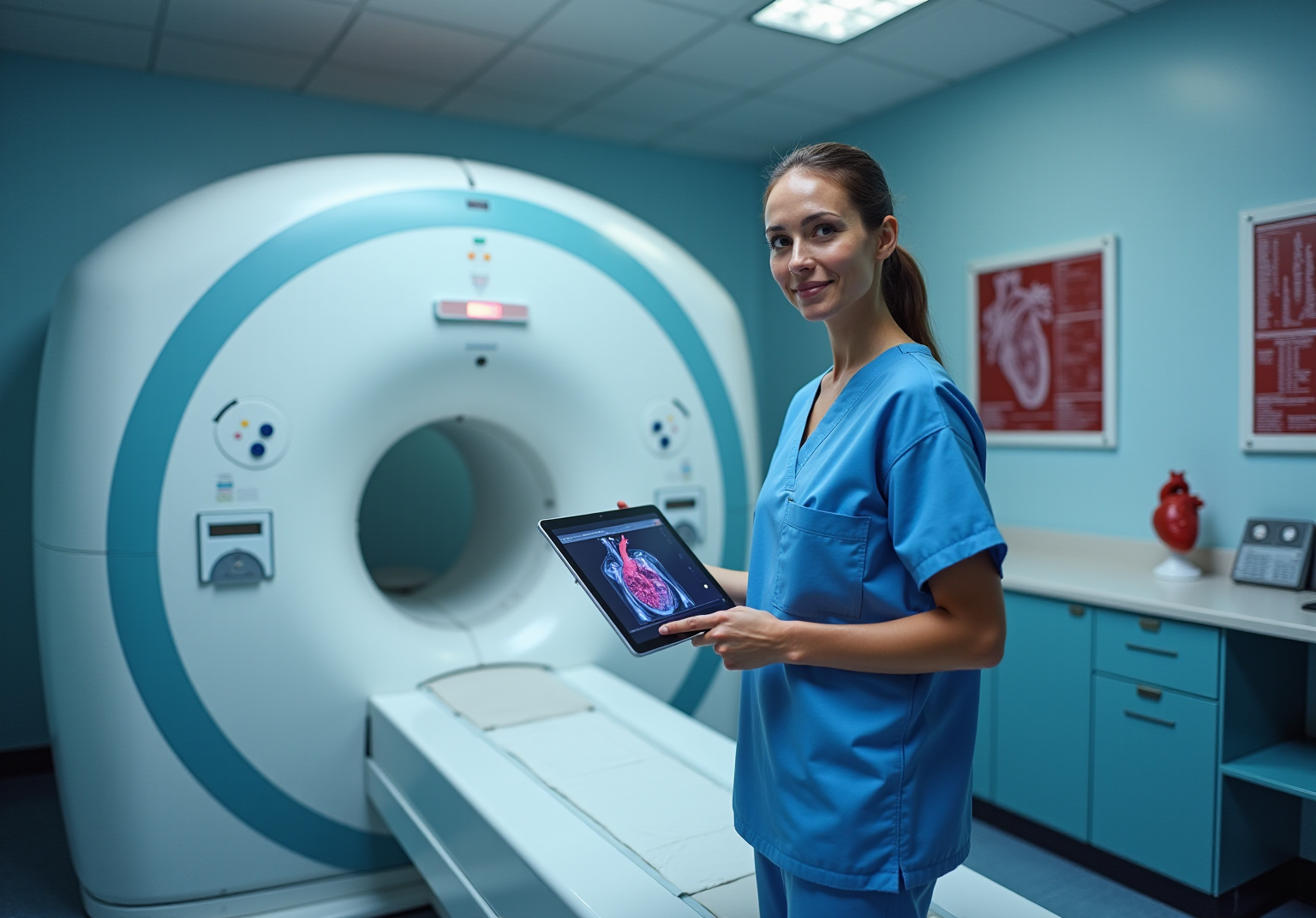


The article discusses the cardiac PET scan, a non-invasive imaging technique that plays a vital role in evaluating blood flow and metabolic activity in the heart. This is crucial for the early detection of cardiovascular diseases, which can be a source of concern for many. Understanding this procedure can help alleviate some of that anxiety.
It details the steps involved, including preparation and potential risks, ensuring you are well-informed. The article also explains how to interpret the results, emphasizing the scan's importance in enhancing patient outcomes through accurate diagnosis and timely intervention. This knowledge can empower you to take charge of your health.
In addition to this, knowing that such advanced technology is available can bring comfort. It reassures patients that they are taking proactive steps toward maintaining their heart health. If you have any questions or concerns about the cardiac PET scan, please don’t hesitate to reach out for support. Your health is our priority, and we are here to help you navigate this journey with compassion and care.
A cardiac PET scan is a groundbreaking non-invasive imaging technology that provides essential insights into heart health and function. This advanced diagnostic tool not only facilitates the early detection of cardiovascular diseases but also enhances treatment planning by offering detailed visualization of blood flow and metabolic activity. However, we understand that with such sophisticated technology comes a host of questions about the procedure, preparation, and interpretation of results. What should you know to navigate this process effectively and ensure optimal outcomes?
In addition to this, it’s natural to feel a bit anxious about what to expect. We’re here to support you every step of the way. This article will gently guide you through the key aspects of the cardiac PET scan, helping you feel more informed and at ease. Remember, you are not alone in this journey; many patients have successfully navigated these waters with the right information and support. Let’s explore together how this innovative tool can be a vital part of your heart health journey.
A cardiac PET scan is a non-invasive imaging test that assists in visualizing blood flow and metabolic activity in the heart. At Amavita Heart and Vascular Health®, we are proud to offer advanced cardiac PET scan technology with N-13 Ammonia imaging. This innovative approach includes quantitative blood flow analysis, allowing us to identify cardiovascular disease years earlier than traditional methods. Such a diagnostic ability is crucial for detecting coronary artery disease, assessing cardiac function, and evaluating treatment effectiveness, ultimately leading to improved patient outcomes.
By using a minimal amount of radioactive substance, this imaging procedure provides detailed visuals that can reveal areas of reduced blood circulation or abnormal metabolic function. These insights are essential for timely intervention and management of cardiac issues. This is especially important for older individuals who may have various comorbidities and are at an . We understand that health concerns can be overwhelming, but we are here to support you every step of the way. If you have any questions or would like to learn more about how we can help, please don’t hesitate to reach out.
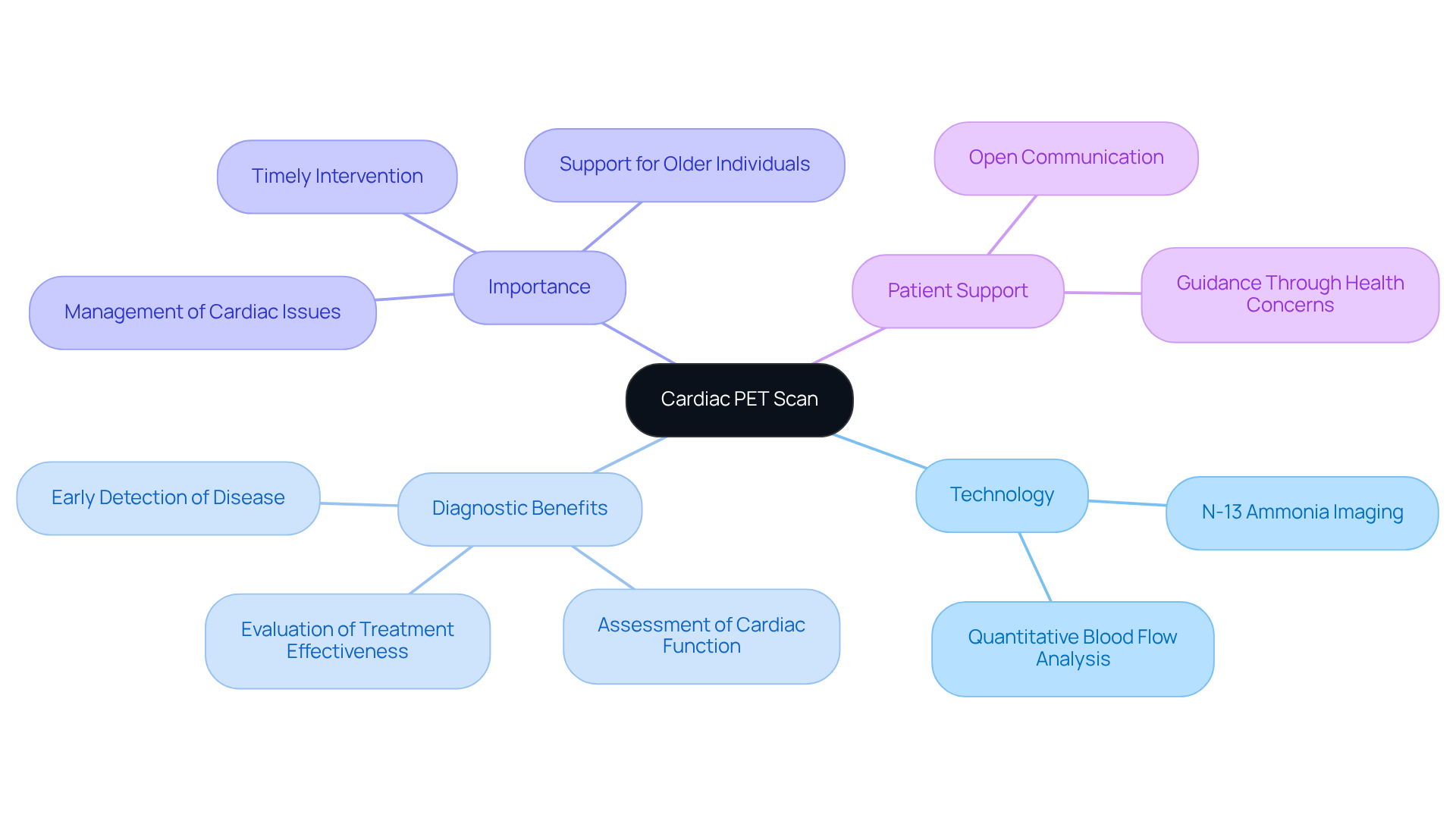
The cardiac pet scan procedure is designed with several key steps to ensure an accurate assessment of heart health, particularly for high-risk patients, including those with diabetes, hypertension, or a family history of heart disease, as well as individuals with inconclusive standard testing or those seeking executive health screenings.
The entire procedure typically takes about one to three hours, including preparation, the study, and discharge, with the actual imaging lasting around 30 minutes. Patients can expect minimal discomfort, and results are usually available within 24 to 48 hours. This allows for timely discussions regarding next steps in their care, including treatment monitoring to assess the effectiveness of cardiac interventions. This comprehensive approach not only enhances diagnostic accuracy but also prioritizes patient comfort and safety throughout the process, reflecting Amavita's commitment to advanced cardiovascular care, supported by Dr. Martinez-Clark's Harvard training and extensive cardiovascular experience.
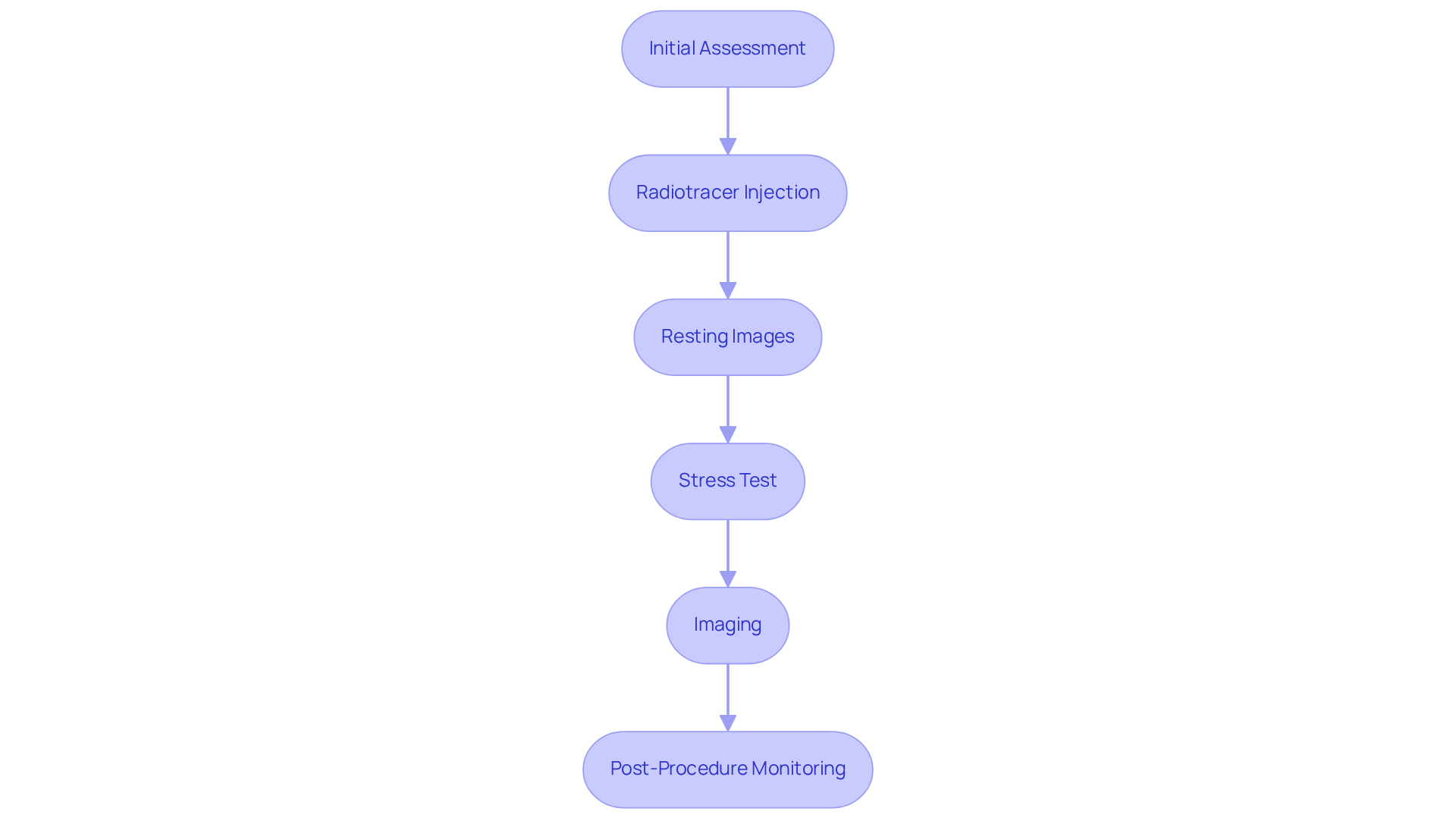
Preparing for a cardiac pet scan can feel overwhelming, but understanding the steps involved can help ease your concerns. Here are some important preparations to consider:
By taking these steps, you can feel more prepared and confident as you approach your cardiac pet scan. Remember, we’re here to support you every step of the way.
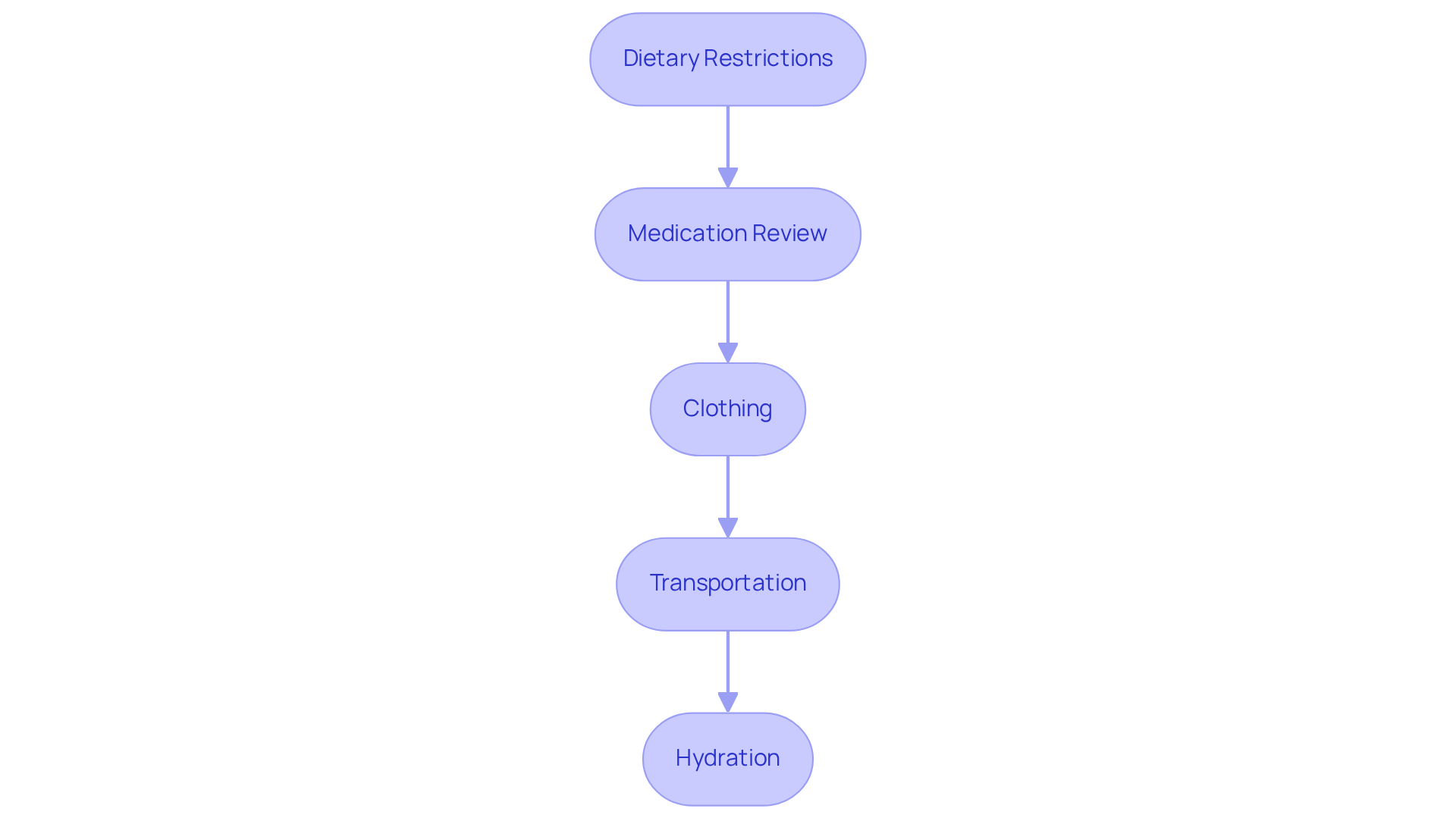
Cardiac PET scans are generally considered safe; however, it’s important to be aware of several risks and considerations that may concern you:
In practice, healthcare professionals prioritize your safety by adhering to strict protocols and using the lowest effective dose of radiotracer necessary for accurate imaging. This commitment to safety is underscored by the fact that the has a brief half-life, ensuring it decomposes quickly and reduces prolonged exposure. Overall, while the benefits of the cardiac PET scan in identifying conditions such as coronary artery disease and myocardial infarctions are significant, recognizing these risks allows for informed decision-making and optimal patient care. If you have any concerns or questions, please don’t hesitate to reach out to your healthcare provider for support.
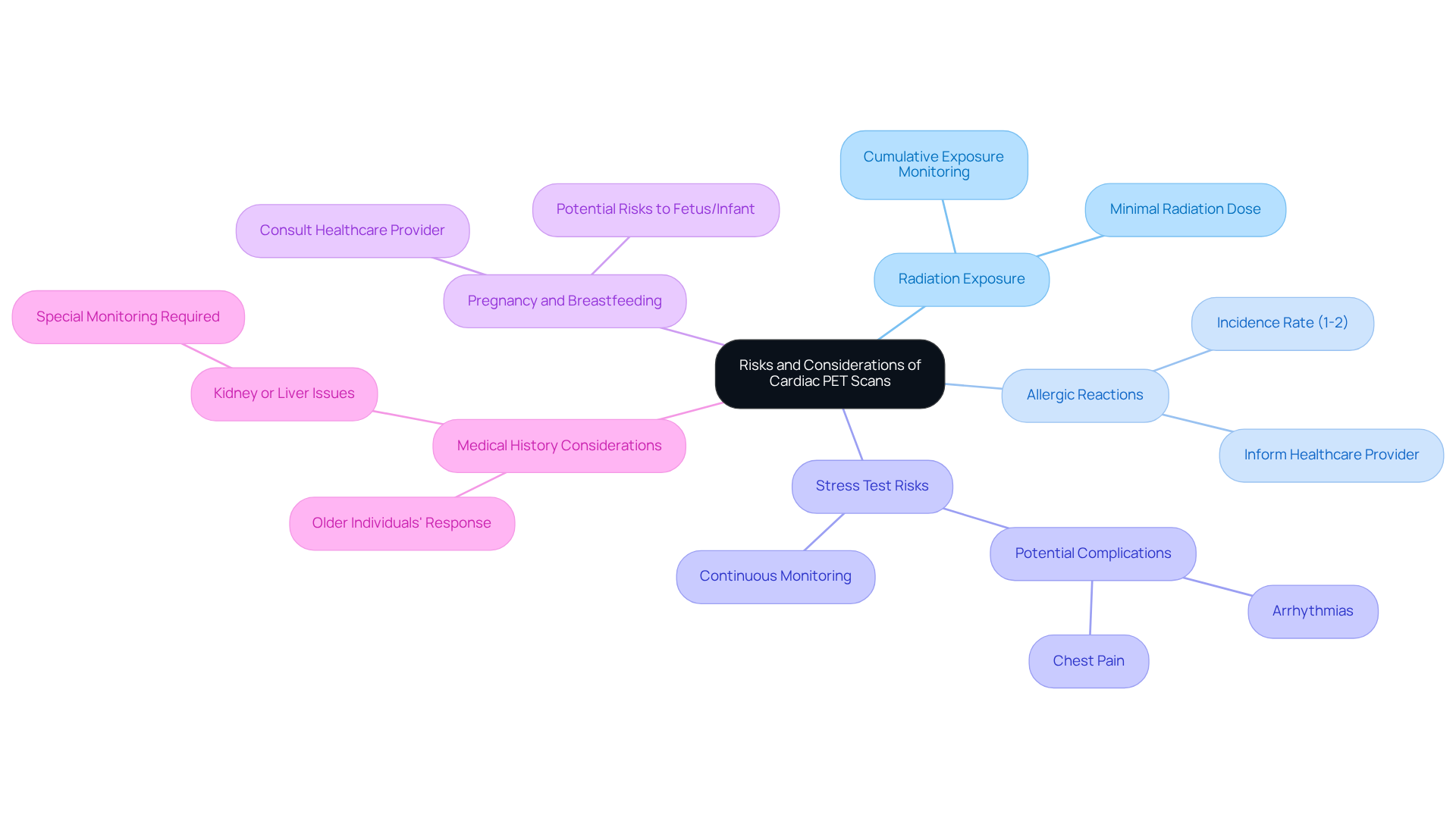
Understanding the results of a is important, particularly for distinguishing between normal and abnormal findings.
A normal PET scan suggests that blood flow to the heart is sufficient, with no significant areas showing reduced blood flow or unusual metabolic activity. This is a reassuring indication of healthy cardiac function.
On the other hand, abnormal results can raise concerns about potential issues, such as:
If the results are concerning, it’s essential to discuss them with your healthcare provider. They can guide you on the next steps, which may include further testing or treatment options. Remember, you are not alone in this journey; your healthcare team is here to support you in understanding your findings and developing a management plan that suits your needs. Together, we can navigate your health with care and compassion.
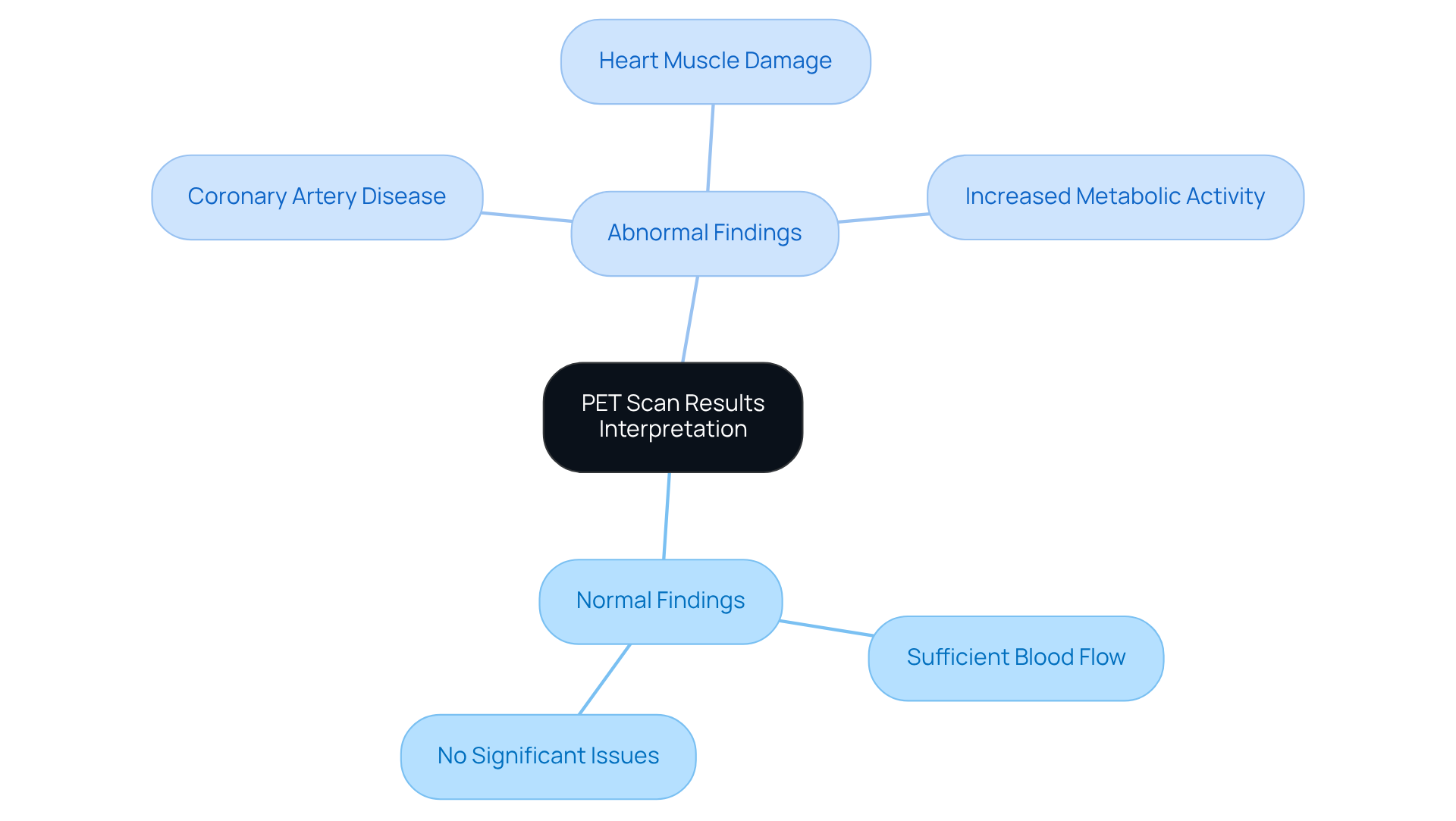
A cardiac PET scan is an essential tool for the early detection and management of cardiovascular diseases. By offering detailed insights into blood flow and metabolic activity in the heart, this non-invasive imaging technique allows healthcare providers to identify potential issues long before they develop into serious conditions. The advanced technology used in cardiac PET scans not only enhances diagnostic accuracy but also plays a vital role in creating effective treatment plans tailored to each patient.
In this article, we have outlined the procedure for undergoing a cardiac PET scan, highlighting the importance of preparation, the steps involved, and potential risks. It’s crucial to consider:
to ensure your safety and comfort. Moreover, understanding the difference between normal and abnormal results empowers you to engage in informed discussions with your healthcare providers regarding your heart health.
Ultimately, embracing the advancements offered by cardiac PET scans can lead to better outcomes in cardiovascular care. We encourage you to consult with your healthcare team about the benefits of this imaging modality, especially if you are at risk for heart disease. Taking proactive steps to monitor your heart health through tools like cardiac PET scans can pave the way for a healthier future, reinforcing the importance of early detection and intervention in cardiology. Remember, you are not alone on this journey; support is always available to help you navigate your health.
What is a cardiac PET scan?
A cardiac PET scan is a non-invasive imaging test that visualizes blood flow and metabolic activity in the heart, helping to identify cardiovascular disease earlier than traditional methods.
Why is a cardiac PET scan important?
It is crucial for detecting coronary artery disease, assessing cardiac function, and evaluating treatment effectiveness, ultimately leading to improved patient outcomes.
How does the cardiac PET scan procedure work?
The procedure includes several steps: initial assessment, radiotracer injection, resting images, a stress test, imaging, and post-procedure monitoring.
What happens during the initial assessment of a cardiac PET scan?
Patients undergo a thorough evaluation that includes a review of their medical history and current medications to address specific health concerns.
What is the role of the radiotracer in a cardiac PET scan?
A small amount of radioactive material is injected to highlight regions of the heart during imaging, allowing for precise evaluations.
What occurs after the radiotracer injection?
Patients rest briefly to allow the tracer to circulate and be absorbed by the cardiac muscle, which is essential for optimal imaging results.
How is the stress test conducted during a cardiac PET scan?
The stress test assesses blood flow during exertion, which can be achieved through physical activity or medication, helping to understand blood circulation to the heart under increased demand.
What happens during the imaging phase of the cardiac PET scan?
The imaging takes place in a specialized machine that detects radiation emitted by the tracer, producing detailed pictures of the heart.
How long does the entire cardiac PET scan procedure take?
The entire procedure typically takes about one to three hours, with the actual imaging lasting around 30 minutes.
What can patients expect regarding discomfort and results after a cardiac PET scan?
Patients can expect minimal discomfort, and results are usually available within 24 to 48 hours for timely discussions about next steps in their care.